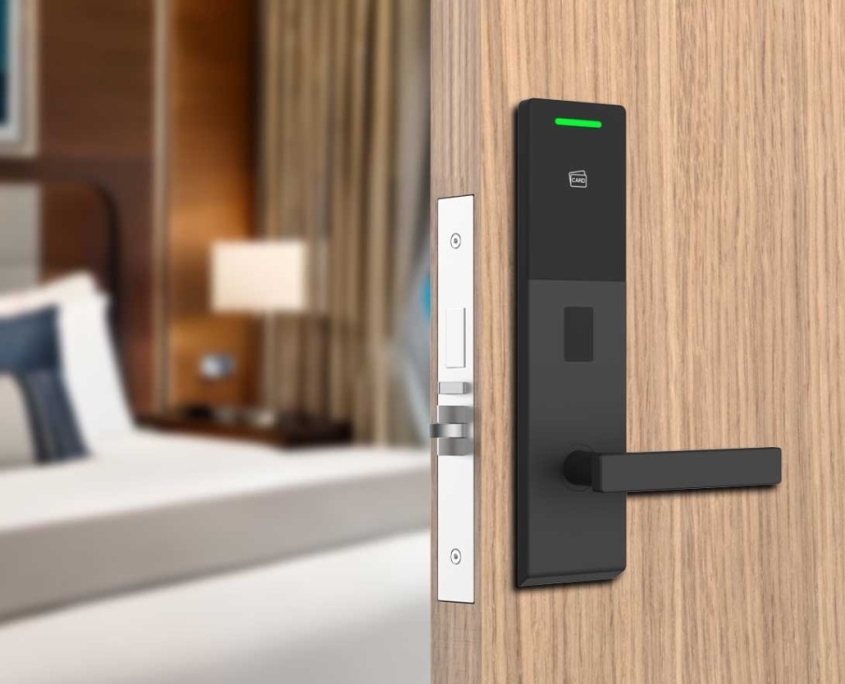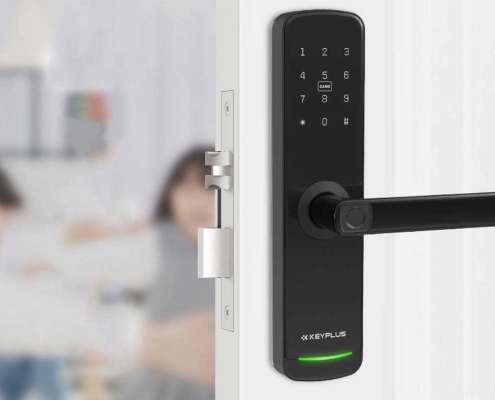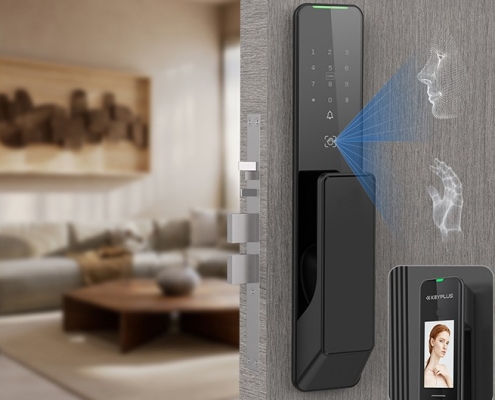Advantages and Disadvantages of RFID Door Lock Systems: A Comprehensive Guide
RFID (Radio-Frequency Identification) door lock systems have revolutionized access control across industries, from hotels and offices to residential buildings. These systems use wireless technology to authenticate users, replacing traditional keys with cards, fobs, or even smartphones. While they offer significant benefits, they also come with challenges. This article explores the pros and cons of RFID door locks, tailored to American readers prioritizing security, convenience, and adaptability.
Advantages of RFID Door Lock Systems
1. Enhanced Security
RFID systems provide superior security compared to mechanical locks. Each RFID tag or card contains a unique encrypted identifier that is nearly impossible to duplicate. Advanced encryption protocols ensure data transmitted between the tag and reader remains secure, minimizing risks of hacking or cloning. For example, high-end systems like HID Global’s iCLASS SE platform use 32-bit encryption and hidden modes to prevent unauthorized access.
Additionally, RFID locks eliminate risks associated with lost keys. Administrators can instantly revoke access for misplaced cards, avoiding the need to rekey entire systems—a common headache with traditional locks.
2. Unmatched Convenience
RFID technology enables contactless entry, allowing users to unlock doors by simply waving a card or smartphone near the reader. This feature is particularly valuable in high-traffic environments like hotels, where guests appreciate seamless access without fumbling for keys. For instance, the Hugo Hotel in Manhattan reported improved guest satisfaction after adopting RFID locks compatible with NFC smartphones.
The system also streamlines management. Hotel staff can remotely issue or deactivate digital keys, track entry logs, and integrate with other systems (e.g., alarms, HVAC) for centralized control.
3. Scalability and Integration
RFID systems are highly adaptable. They support multi-functional integration, such as linking to surveillance cameras, attendance systems, or IoT devices. For example, a corporate office might sync RFID access logs with employee attendance software to monitor punctuality.
They also accommodate diverse environments. Ultra-high-frequency (UHF) RFID systems, for instance, offer long-range detection (up to 6 meters), ideal for parking gates or large campuses.
4. Cost-Effectiveness Over Time
While initial installation costs are higher than mechanical locks, RFID systems reduce long-term expenses. They minimize key replacement costs, lower labor needs for manual audits, and require minimal maintenance due to durable, weather-resistant components. A study by RFID solution provider Lockin showed that businesses saved up to 30% in operational costs after switching to RFID.
5. Audit Trails and Accountability
RFID systems generate detailed logs of entry times, user IDs, and locations. This data is invaluable for security investigations or compliance reporting. For example, hospitals use these logs to restrict unauthorized access to sensitive areas like pharmacies.
Disadvantages of RFID Door Lock Systems
1. Vulnerability to Cloning and Hacking
Despite encryption, RFID systems are not immune to cyberattacks. Skilled hackers can clone tags using inexpensive tools or intercept radio signals to gain unauthorized access. In 2023, researchers demonstrated how certain UHF RFID keys could be duplicated in minutes. High-security industries like finance may need supplemental measures like biometric verification to mitigate this risk.
2. Environmental Interference
RFID performance can degrade in challenging environments. Metal surfaces or liquids (e.g., water pipes, metal doors) can disrupt signal transmission, leading to read failures. Specialized “metal tags” are available but add complexity and cost.
3. Dependency on Power and Infrastructure
Unlike mechanical locks, RFID systems rely on electricity. Power outages or battery failures can lock users out unless backup mechanisms (e.g., manual overrides) are in place. Additionally, integrating RFID with existing infrastructure (e.g., legacy security systems) may require costly upgrades.
4. High Initial Costs
Implementing RFID technology involves significant upfront investment. A full system—including readers, software, and tags—can cost thousands of dollars, making it prohibitive for small businesses or budget-conscious homeowners.
5. Privacy Concerns
RFID systems collect vast amounts of user data, raising privacy issues. Unauthorized tracking of employee movements or guest habits could violate privacy laws like California’s CCPA. Organizations must ensure compliance with data protection regulations.

Key Considerations for American Users
For Americans weighing RFID locks, here are practical recommendations:
-
Prioritize Encryption: Opt for systems with AES-128 or higher encryption standards.
-
Combine with Physical Safeguards: Use RFID alongside deadbolts or portable door jammers for layered security.
-
Test Environmental Compatibility: Ensure tags and readers function reliably in your building’s conditions (e.g., metal doors, humidity).
-
Plan for Power Failures: Install backup batteries or manual key overrides.
The Future of RFID Locks
Emerging trends aim to address current limitations:
-
Biometric Integration: Hybrid systems combining RFID with fingerprint or palm-vein scanning enhance security.
-
AI-Driven Analytics: Smart locks with AI can detect suspicious behavior (e.g., repeated failed access attempts) and alert security teams.
-
Sustainability: Manufacturers are developing eco-friendly tags and low-power readers to reduce environmental impact.
Conclusion
RFID door locks offer a compelling mix of security, convenience, and scalability, making them ideal for modern American homes and businesses. However, their vulnerabilities to hacking, environmental limitations, and upfront costs require careful evaluation. By understanding these trade-offs and adopting complementary safeguards, users can maximize the benefits while minimizing risks. As technology evolves, RFID systems will likely become even more robust, further solidifying their role in the future of access control.








